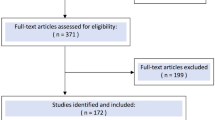Abstract
Background
In the surgical treatment of breast ptosis, the plastic surgeon's main challenge is to mobilize the nipple–areola complex (NAC) over long distances, preserving its sensitivity. Herein, we aimed to evaluate the NAC sensitivity following a periareolar dermis release in patients undergoing surgical correction of breast ptosis.
Methods
This is a prospective, double-blinded, randomized study in which 39 patients (78 breasts) were operated on for the treatment of breast ptosis. Patients’ breasts were divided into two groups, each breast in a group. In breasts of the experiment group, the periareolar dermis release was used after decortication. This maneuver was not used in the control group's breasts. To analyze the sensitivity in relation with the distance that the NAC should be mobilized to correct breast ptosis, the value of 6 cm was used as boundary. Sensitivity of the NAC was assessed with monofilaments preoperatively and postoperatively—at three and six weeks and one year.
Results
Regarding the sensitivity of the areola, a significant difference was observed in the comparison between the control and experiment groups at the NAC mobility ≤ 6.0 cm in the preoperative. Regarding the nipple, a significant difference was observed in the comparison between the control and experiment groups at three weeks postoperatively for a NAC mobility ≤ 6.0 cm. After one year, there was no difference in the comparison between the groups in either areola or nipple.
Conclusion
The periareolar dermis release does not compromise NAC vascularization and pressure sensitivity in patients undergoing breast ptosis correction.
Level of Evidence II
This journal requires that authors assign a level of evidence to each article. For a full description of these Evidence-Based Medicine ratings, please refer to the Table of Contents or the online Instructions to Authors www.springer.com/00266.


Similar content being viewed by others
References
Rinker B, Veneracion M, Walsh CP (2010) Breast ptosis: causes and cure. Ann Plast Surg 64:579–584
Orlando JC, Guthrie RHJ (1975) Superomedial dermal pedicle for nipple transposition. Br J Plast Surg 2:42–45
Bucaria V, Elia R, Maruccia M et al (2018) Why choose the septum-supero-medial (SSM)-based mammaplasty in patients with severe breast ptosis: an anatomical point of view. Aesth Plast Surg 42:1439–1446
Regnault P (1976) Breast ptosis: definition and treatment. Clin Plast Surg 3:193–203
Sá JZ, Otavio MLP, Barbosa FAM et al (2017) Innervation of the nipple-areolar complex after reduction mammaplasty: a histological study. Rev Bras Cir Plast 32:202–207
Sá JZ, Kawamura K, Barreto RHC, Ramos AS, Campos AT, Braga ACCR (2018) Evaluation of the nipple-areola complex after reduction mammoplasty with dermal release versus resected volume of the breast tissue. Rev Bras Cir Plast 33:478–483
Greuse M, Hamdi M, DeMely A (2001) Breast sensitivity after vertical mammaplasty. Plast Reconstr Aesth Surg 107:970
Abramo AC, Oliveira LMF, Milan RC, Mateus S (1999) Avaliação da sensibilidade do complexo aréolo-mamilar após mamoplastia redutora com pediculo dérmico vertical superior. Rev Bras Cir Plast 14(1):7–16
Schlenz I, Rigel S, Schemper M, Kuzbari R (2005) Alteration of nipple and areola sensitivity by reduction mammaplasty: a prospective comparison of five different techniques. Plast Reconstr Surg 115:743–751
Longo B, Campanale A, Farcomeni A, Santanelli F (2013) Long-tem sensory recovery of nipple-areola complex following superolateral pedicled reduction mammaplasty. Plast Reconstr Surg 132:735e
Blomqvist G, Alberius P (1990) Nipple-areola transposition by the superolateral-rotation pedicle technique in reduction mammaplasty: Surgical description. Ann Plast Surg 24:475–480
Sarhadi NS, Shaw Dunn J, Lee FD, Soutar DS (1996) An anatomical study of the nerve supply of the breast, including the nipple and areola. Br J Plast Surg 49:156
Pitanguy I (1961) Mamoplastia: estudo de 245 casos consecutivos e apresentação de técnica pessoal. Rev Bras Cir 42:201–220
Sá JZ, Braga ACCR, Barreto RHC, Ramos AS, Rodrigues AEO, Santa-Cruz F, Aguiar JLA (2020) Sensitivity of the nipple-areola complex in reduction mammaplasty following periareolar dermis section. Aesth Surg J. In press
Erfon J, Rodrigues CMM, Markovic A (2019) Breast reduction: 33 years using a single central block. Aesth Plast Surg 43:1480–1488
Schwarzman E (1930) Die Technik der Mammaplastik Der. Chirurg 2:932–944
Pitanguy I (1967) Surgical treatment of breast hypertrophy. Br J Plast Surg 20:78
Funding
This research did not receive any financial support.
Author information
Authors and Affiliations
Corresponding author
Ethics declarations
Conflict of interest
The authors declare that they have no conflict of interest.
Ethical Approval
All procedures performed in studies involving human participants were in accordance with the ethical standards of the institutional and/or national research committee and with the 1964 Helsinki Declaration and its later amendments or comparable ethical standards. This research project was approved by the Ethics Committee of our institution under the protocol CAAE 05351312.3.0000.5208.
Informed Consent
Informed consent was obtained from all patients involved.
Additional information
Publisher's Note
Springer Nature remains neutral with regard to jurisdictional claims in published maps and institutional affiliations.
Rights and permissions
About this article
Cite this article
Sá, J.Z., Santa Cruz Oliveira, F., Santinoni, W.F. et al. Evaluation of the Sensitivity of the Nipple–Areola Complex in Patients Undergoing Breast Ptosis Correction with Periareolar Dermis Release: A Randomized Controlled Trial. Aesth Plast Surg 44, 1405–1411 (2020). https://doi.org/10.1007/s00266-020-01835-7
Received:
Accepted:
Published:
Issue Date:
DOI: https://doi.org/10.1007/s00266-020-01835-7




